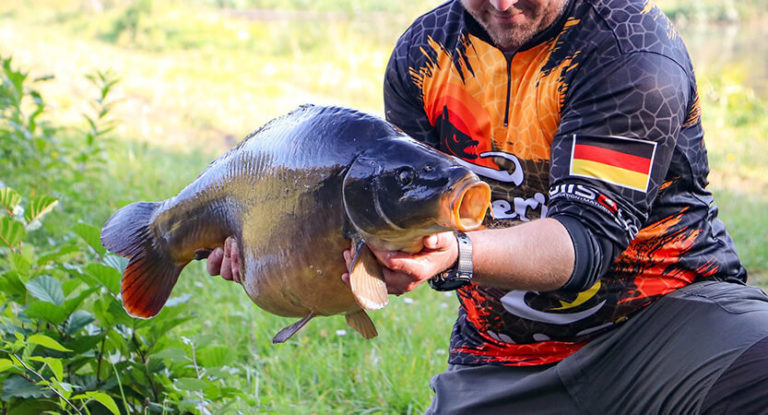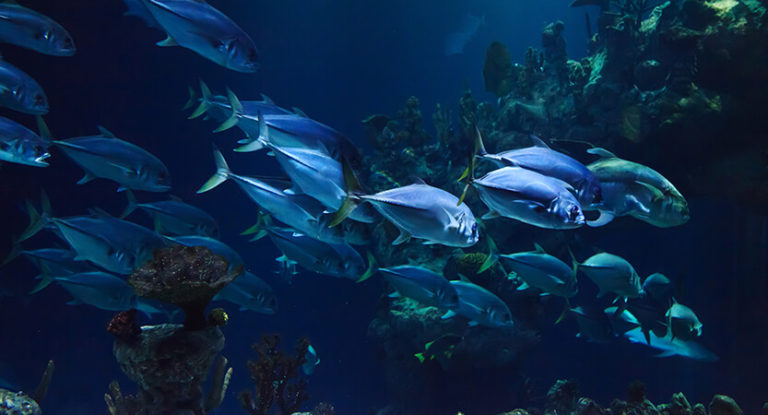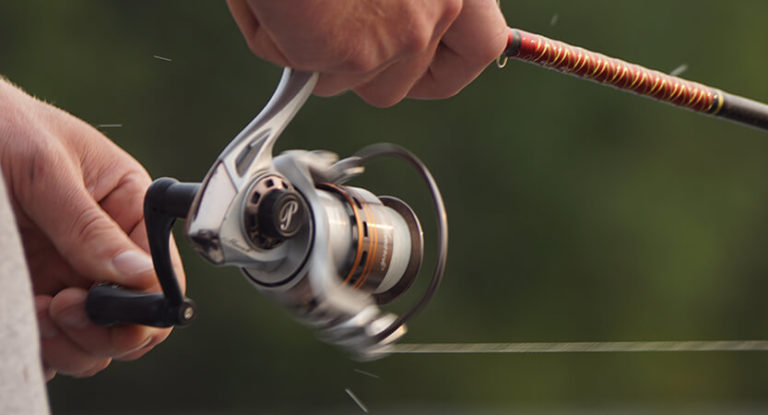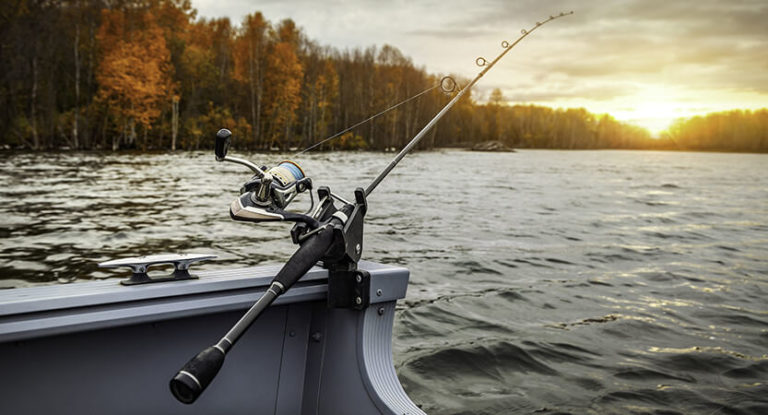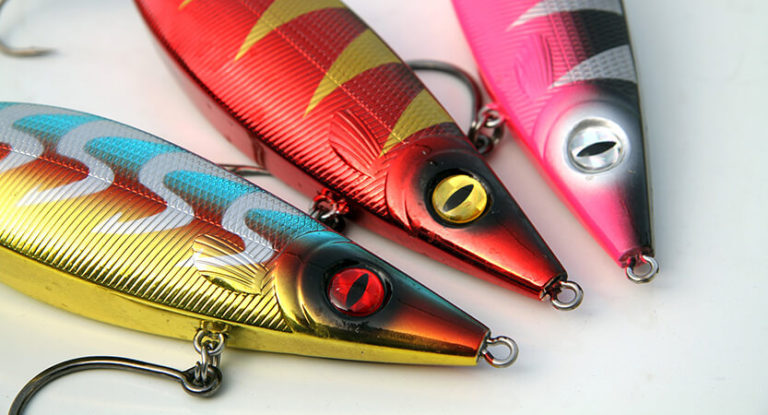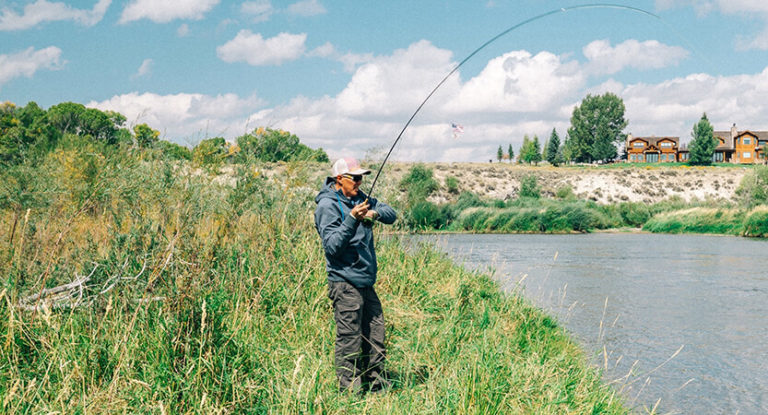Zander (formerly known as Stizostedion) is one of the most common freshwater predators in our water bodies. He can be called the most productive and successful, and he hunts all year round. This means that you can catch zander in any season, you just need to vary the tackle and fishing tactics. At different times of the year, he differentiates his own preferences, and this must be taken into account when organizing a fishing session.
Today we will get acquainted with the usual habitats of the fanged (this is how the pike perch is called for the special structure of the mouth, decorated with impressive teeth), we will cover its basic food preferences and habits. And, most importantly, let us listen to experienced fishermen who have been specializing in catching this predator for more than one season. Their practical experience is truly invaluable!
Here is an overview of the content of this tutorial, feel free to jump to any section you care about:
For more fishing instructions, take a look at these popular Trizily links: Best Fishing Sunglasses, Best Baitcasting Reels.
- How To Catch Pike
- How To Set The Drag On A Fishing Reel
- How To Choose A Spinning Reel (Complete Guide)
Where does pike perch live?
The pike perch and its closest relative, the sander volgensis, inhabit almost the entire territory, with the exception of the coldest regions. Most of all, he adores deep rivers and lakes with flowing clean water, as he is very sensitive to the amount of oxygen. In this regard, fishing for zander in overgrown bays, stagnant reservoirs and ponds is unpromising. However, this predator does not hesitate to enter river estuaries, where there is a fairly significant addition of salt water, as well as in backwaters.
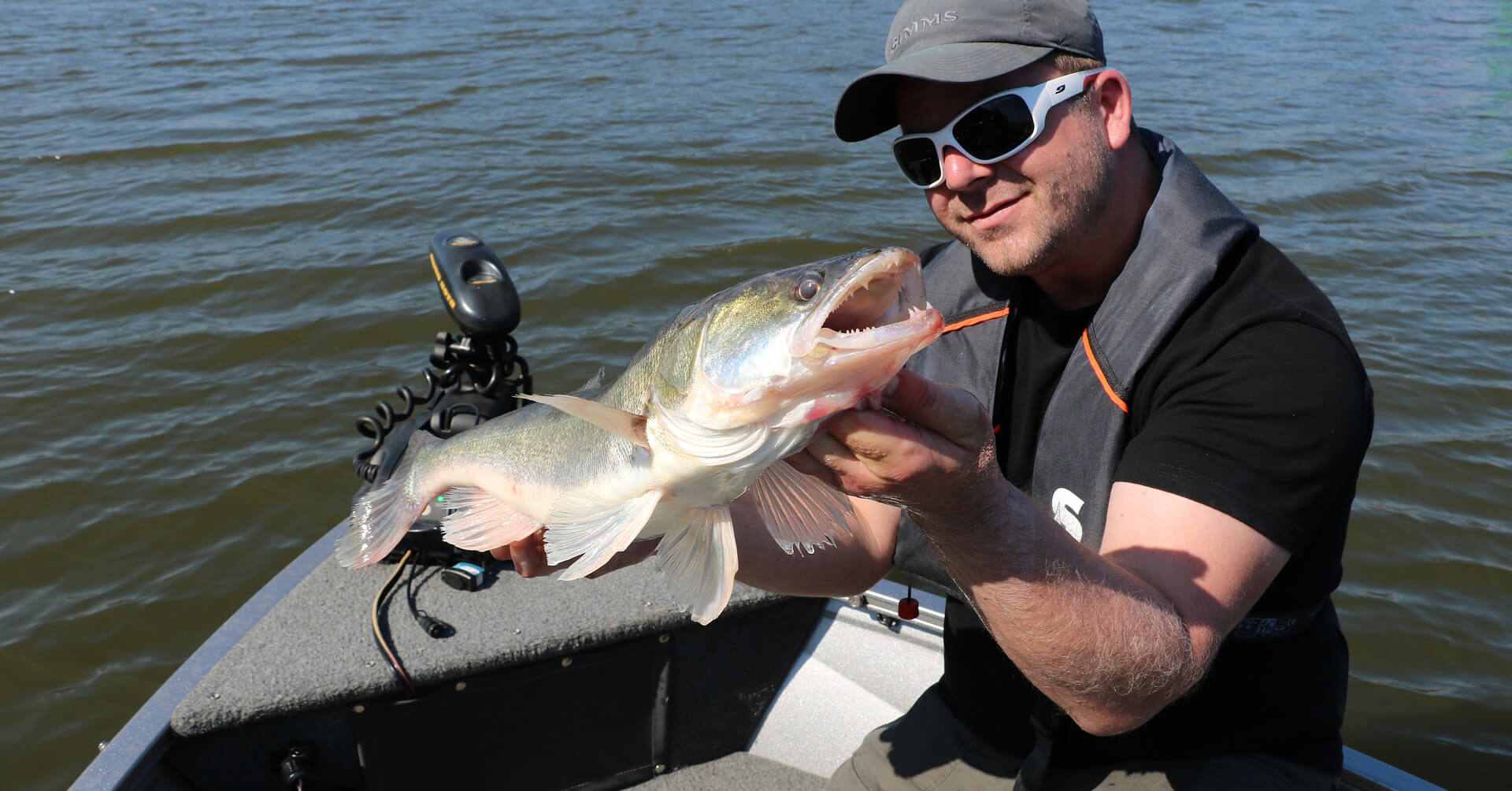
The adult pike perch spends the lion’s share of the time at a considerable depth at the bottom, and prefers hard surfaces. Silty or algae-covered bottom does not appeal to him. Only young owners of growing tusks can constantly live in shallow water and in coastal thickets.
Zander very rarely departs from its usual habitats, the only exception is the spawning period . During this period, in the spring, sexually mature pike perch set up nests in coastal thickets, in relatively shallow water areas, and in other secluded places.
At other times, it is worth looking for pike perch in open water :
- in backwaters with a barely noticeable reverse flow;
- in pits at considerable depth (hunts on the slopes);
- on a sealed and littered bottom;
- in places of bottom anomalies;
- near hydraulic structures (dams, dams, embankments, bridges);
- along the edges and heaps;
- in the pools beyond the river rapids.
Pike perch is productively caught close to its usual habitats – it moves away from the chosen pits and snags only a short distance, and exclusively for the sake of hunting.
Food preferences and methods of hunting
Young pike perch that have not reached maturity prefer to keep in flocks in shallow water, gradually sinking into depths as they mature. Large fish of commercial interest live and hunt mainly alone or in small groups of several individuals, gathering in schools only before leaving for wintering and spawning. A two-kilogram individual is already rarely found in the company of others of its kind, especially in the summer.
Pike perch hunts both by driven and ambush methods. Usually he attacks potential prey from an ambush, but pursues it until he catches or realizes the futility of further pursuit. The so-called “battle” looks especially impressive, which can be observed at dusk and in the predawn darkness. The pike perch accelerates like a torpedo, reaching the very surface of the water, and actively pursues its prey, producing loud bursts and practically jumping out of its native element. It is for this reason that in summer it is best to catch zander at night, during the period of maximum activity.
The basis of the food base of the fanged is juvenile fish, and it prefers prey with a narrow, run-through body. He consumes large quantities of common bleak (Alburnus alburnus), common dace, gudgeon, young perch, roach, rudd, and so on. Sometimes he does not disdain his own relatives, especially with a limited food supply. On occasion, a frog, leech, lamprey, cancer, a particularly appetizing worm or a large dragonfly will become its prey.
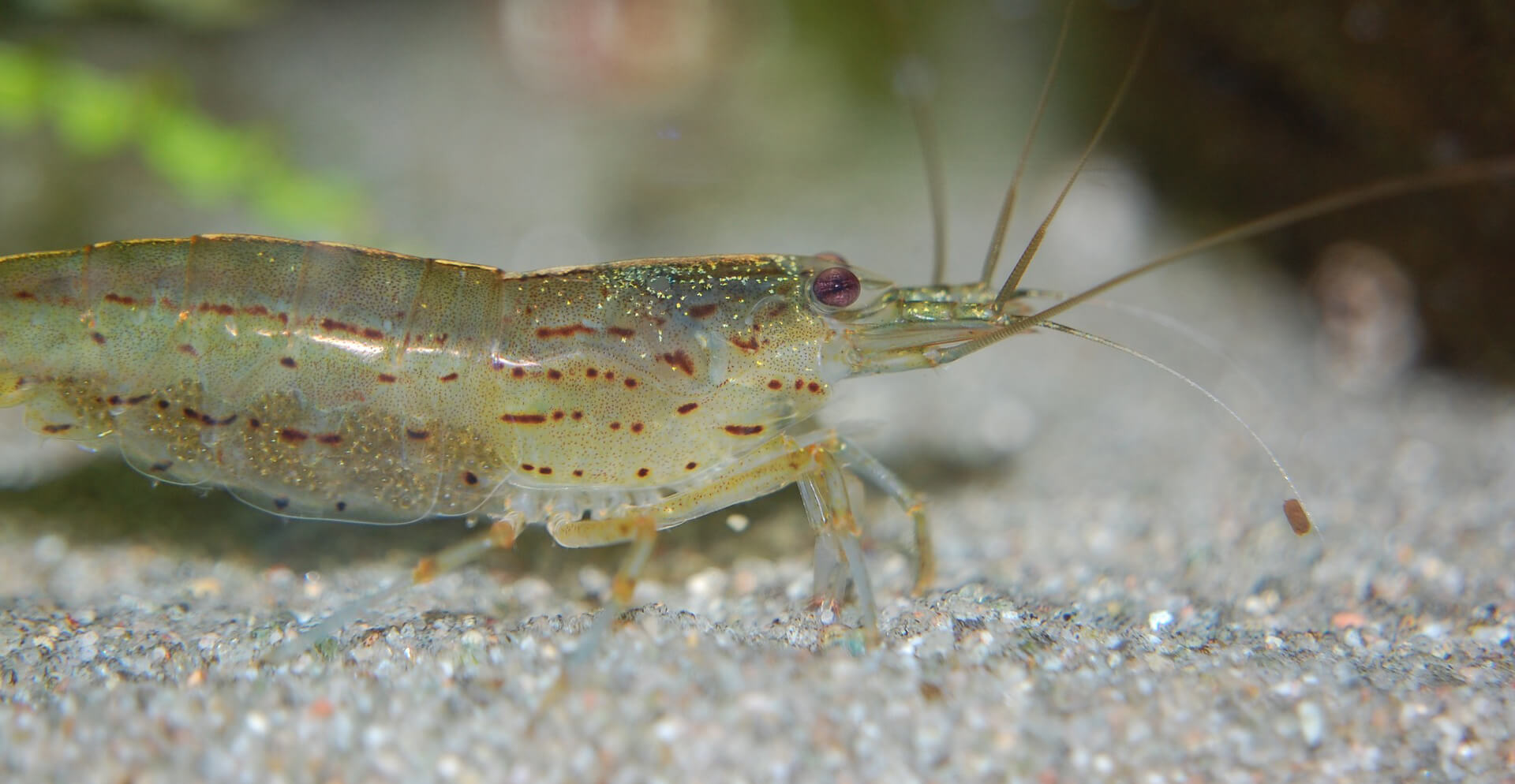
Features of fishing by seasons
Zander is active all year round, only the intensity of food consumption changes. Let’s deal with this issue in more detail.
In the spring, the pike perch prepares for spawning and feeds the mass. At this time, as the fishermen say, he “grazes” the flocks of peaceful fish, accompanying them to the places of spawn and at the same time hunting for the weakened and strayed from the schools of individuals. At this time, the most catchy is spinning: pike perch actively pursues wobblers and silicone lures. Bottom gear in the spring is not particularly catchy. It should be remembered that during the period of spawning restrictions, the use of spinning and donuts with several leads is not allowed in all bodies of water.
During the spawning period, which begins in the middle zone around May, the commercial-sized pike perch ceases to actively hunt: it is preoccupied with procreation. By the way, females leave the spawning grounds earlier, and males continue to guard the clutches for several weeks. During this period, pike perch fishing is not only unpromising, but also prohibited at the legislative level.
Biting is resumed in early summer , during the post-spawning period. The pike perch switches to the main food ration, consisting mainly of common bleak, common dace and juveniles of other fish. In summer, the food supply is plentiful, and pike perch can afford to be choosy about food. In the summer period, night fishing from a boat is especially promising, and you can use both float gear and a fishing rod, and spinning . Bottom gear equipped with a worm, frog, live bait (small or fish cuts) also show themselves well. They are thrown at night along the shoals, where the predator goes in search of prey.
In the daytime, in the heat, pike perch is practically not caught – it departs to great depths, inaccessible for the angler. The exception is the periods of cold snap after a steady heat, as well as the pre-storm hours, when the bite can reach a gluttonous level.
In the fall, the pike perch begins to actively feed fat again, and the bite shifts to the daytime. It goes to even deeper depths in search of larger prey: crucian carp, borer, roach. You need to look for it at the boundaries of the depth difference, which is difficult without a preliminary study of the bottom relief . But a small pike perch perfectly goes for bottom gear or spinning from the shore, and is not particularly picky about the bait.
With the onset of cold weather, the pike perch shifts towards the wintering pits, where representatives of carp breeds go. He usually honorably accompanies the bream, feeding on its juveniles throughout the winter. The exception is deafness, when, due to a lack of oxygen, the fanged becomes lethargic and inactive. But on the first ice, during periods of thaws and stable sunny weather, pike perch is successfully caught on balance weights and vertical spoons. Sometimes the fanged one comes across also on the gutters, intended mainly for pike.
With the onset of spring, even before the opening of water bodies, the predator becomes active again and begins to feed. It leaves its wintering grounds together with bream, successfully hunting and preparing for spawning.
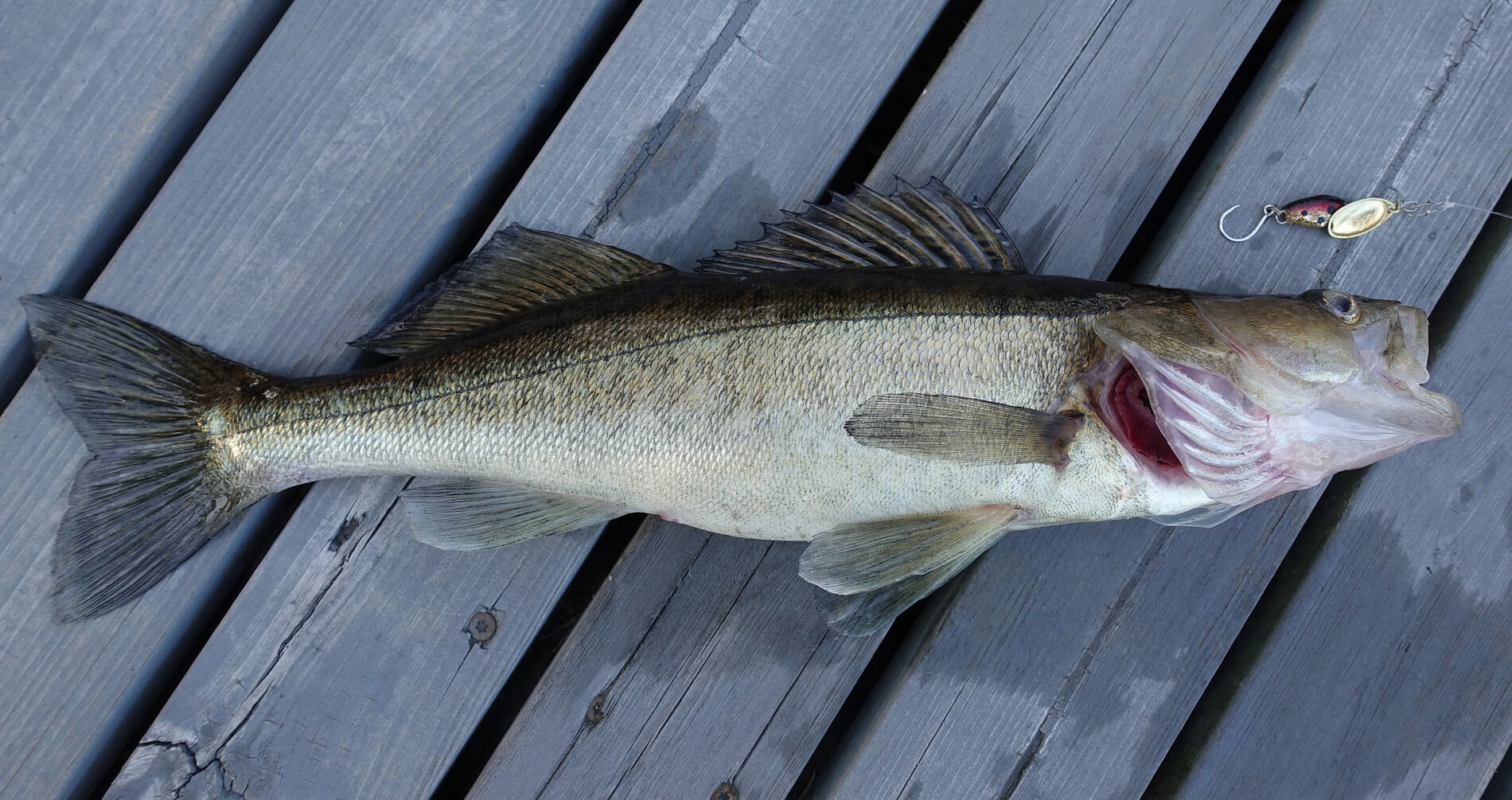
Effective tackle and bait
Each season involves the use of a specific type of tackle in tandem with baits. That is, it is possible to fish with other tackle, but hunting for fanged will be ineffective. At the moment, open water zander is harvested for:
- Spinning . The most versatile and catchy open water tackle, deservedly loved by active fishing enthusiasts. All types of lures, wobblers , as well as soft lures with jig heads or in combination with spaced rigs are used as baits.
- Summer vents . In most cases, classic girders are not very prey: they provide for a limited distance from the coast. But it is possible and necessary to catch pike perch on floating circles.
- Bottom gear . Large pike perch leads a bottom life, which makes the use of bottom gear justified. However, his love for the curled bottom sometimes makes the use of bottom rods impossible.
- Float equipment . Another traditional option for catching pike perch is a powerful telescopic fishing rod with a float rig. The use of a boat is highly desirable.
- Catching a plumb line . A very effective way of catching a fanged from a boat. In this case, either a skirting rod or a short spinning rod is used. This option allows you to fish the deepest holes and attract zander at all water levels.
And now let’s take a closer look at the nuances of goose fishing in more detail.
Spinning
Spinning is a tackle for active fishing of all predators. It can also be used to catch pike perch, although the fanged one is considered a much more “difficult” predator than perch or even pike.
The most catchy time for a spinning player is spring (remember the spawning ban!) And early autumn (until mid-October). At this time, the water is saturated with oxygen, and decent pike perch are caught even from the shore, at relatively shallow depths. In the summer, you have to fish for “difficult” deep areas, relying on the readings of the echo sounder and visual signs of depth difference. It is not bad to try to fish the places where streams and small rivulets flow into the main channel or a flowing lake.
Of all the methods of spinning fishing, the jig shows itself best : it is most effective in spring and autumn. Guiding – classic or long step: the walleye loves an expressive and orderly game of bait, without unnecessary chaos.
Used as bait:
- long-size soft twisters and vibrotails;
- silicone frogs;
- flies with a pronounced front weight;
- foam rubber fish.
For active fish, spinners use silicone baits as part of traditional rigs (jig head with a hook and bait). However, when the pike perch is not very active (especially in the summer), the diverter leash (Moscow rig) shows itself best .
Alternatively, oscillating spoons can be recommended – they are suitable for catching zander at a depth of 4-5 meters. At small distances and depths, the “turntables” are also quite good with classical uniform wiring. The use of wobblers with a zigzag wiring of the twitching type (with expressive yaw from side to side) is justified with sufficient skill of the angler and the correct selection of the bait, not only in design and size, but also in the degree of penetration.
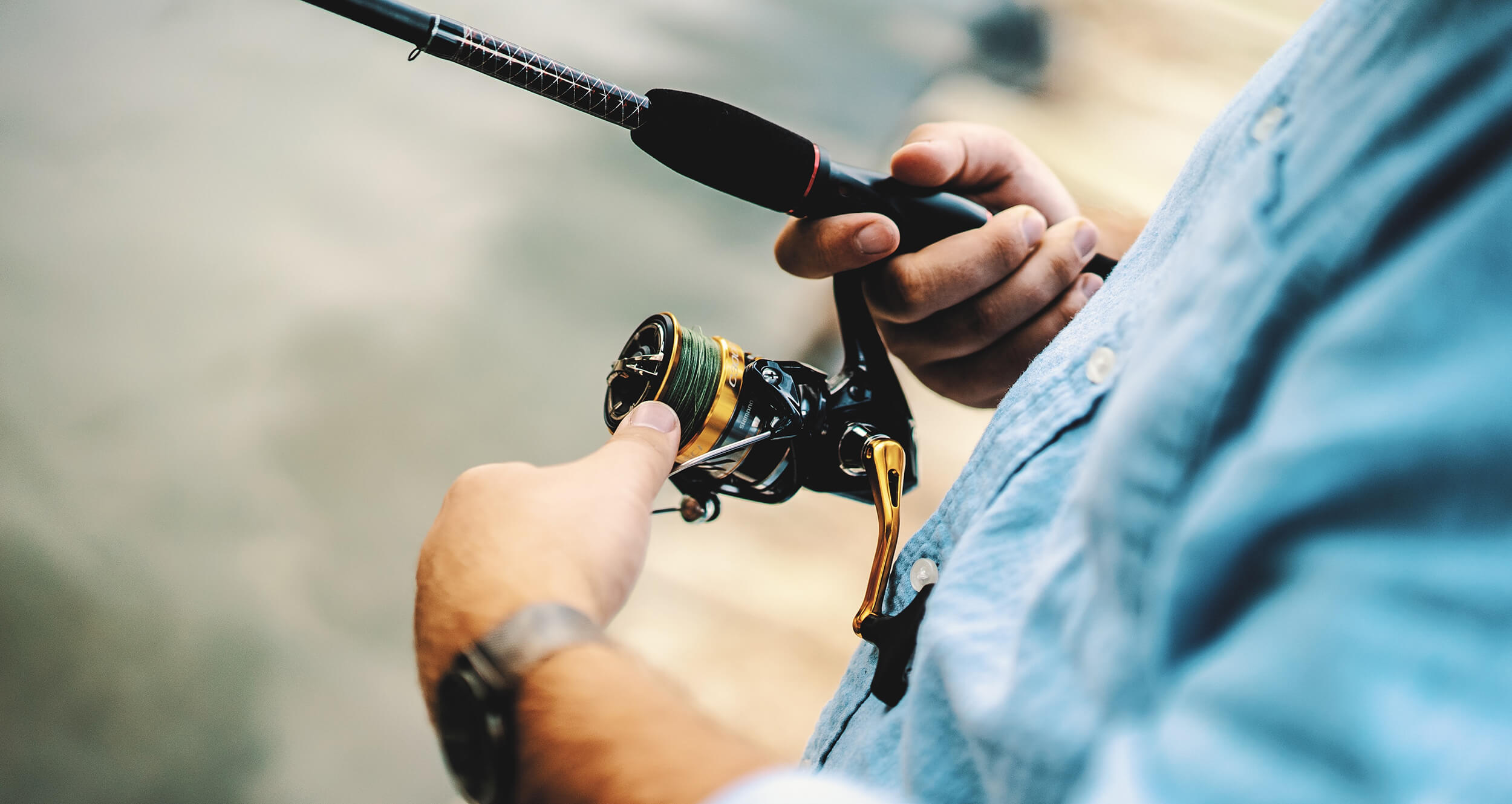
Summer gadgets
Summer zherlitsa is one of the most common live bait tackle. The classics of the genre are sets consisting of fishing line with rigging on a reel and attached to a support on the shore. Unfortunately, due to the behavior and physical characteristics of pike perch, this option is ineffective. However, sometimes the tackle installed in the right place, near the fanged’s camp, brings the desired result.
Mugs , which are a floating variety of girders, show themselves much better . Floating discs with “masts” and fixed rigging are equipped with live bait and set sail. In this case, it is especially important to choose a promising gossip place and set the correct depth so that the live bait is located directly at the bottom, but does not cling to it. A couple of circles from the whole depth can be set to a depth of half water, counting on the fact that the predator went hunting closer to the surface.
Zherlitsa begin to catch pike perch usually just before dawn, because he fattens up to 7-8 hours maximum. Night hunting is also promising, but there is a problem of bite visibility in the dark. We remind you that you need a boat to launch and service the clubs.
Bottom gear
A bottom rod is a fairly popular zander tackle that allows you to fish large water areas at long distances and great depths. There are no special requirements for the selection of a rod, the equipment is also simple and does not differ in pretentiousness. There are many options for rigging, but the most popular is mounting with a side leash 15-20 cm long (a load weighing up to 50 grams is imposed on it). The length of the main leash is 50-70 cm, the hook is a live bait or a tee (other options are possible when using other baits). There is no special need for a reinforced leash (steel, Kevlar), but it is better to use it, since no one can guarantee that a sharp-toothed pike will not be tempted by the bait.
The advantages of this tackle include the possibility of simultaneous feeding. It is carried out through the usual feeders for the adherents of bottom gear: springs, methods, nipples, and so on. The feeder is hung on a side leash in front of the sinker, and in the absence of a current, it replaces it. In this case, plant ingredients form the basis of the feed mixture, but animal components are also mixed into them immediately before casting. It is good to use giblets, dry blood, chopped worms or bloodworms.
The main disadvantage in this case is the high probability of damage to the live bait when casting. You can use a frog, a leech or a bunch of worms, but it is problematic to attract a picky large pike perch in this way. Therefore, it is worth resorting to an alternative method of attaching live bait without mechanical damage: we do not punch the body of a small fish with a crochet hook, but fasten it with an elastic band. However, if such subtleties do not appeal to you, you do not have to bother and equip the bottom rod with fish slices.
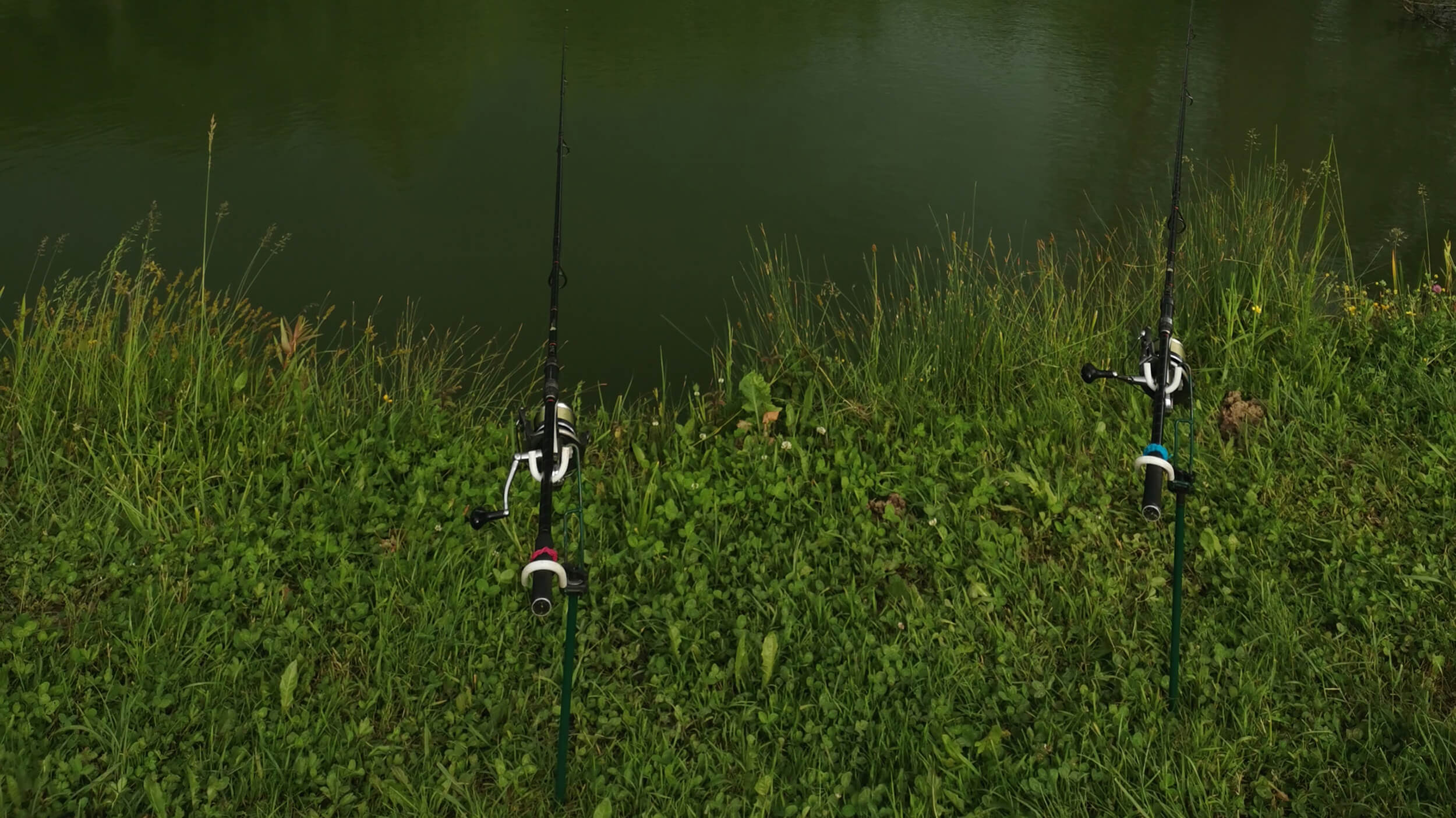
Pike perch is also successfully caught on the classic non-fishing rod with several leashes, as well as its modified version – an elastic band. In this case, the inconsistent nature of the fanged is taken into account: it is not known when he will go hunting, but such a tackle can be installed for the whole night. Several leads with live bait increase the likelihood of a bite. Of the minuses, it is worth mentioning the limited use of these tackles: the fishing place should be not only potentially attractive for a predator, but also free from bottom debris and thickets. A clean water area with a pronounced difference in depth is ideal. Bottom rods can also be installed along the borders of the shoals, where the fanged comes at night in search of prey.
Catching a plumb line
Fishing in a plumb line is carried out either from the side of the boat, or from a steep steep bank. It is problematic to find the conditions for the implementation of the second method, although it looks very promising: the pike perch loves to stand and hunt under the steepest. Therefore, fishing in a plumb line, as a rule, involves the use of a watercraft, ideally a stable boat with a wide bottom. The craft is not at anchor, but drifts slowly, which expands the fishing area.
This strategy is most common for catching passive walleye in the summer when other options seem ineffective. An extremely short spinning blank or the so-called “flange” is used as a rod – a short rod, which you can make yourself. However, you can successfully use the winter nodding option. The rod is played mainly up and down, with a small amplitude and noticeable pauses.
The classic lure in this case is a light vertical spoon in the form of a willow leaf or petal. More modern options include sinking wobblers with sound effects that attract zander. Recently, for this purpose, silicone lures with jig heads have also been used, which have their own animation even at rest. The tracking is carried out vertically, but the natural movement of the boat gives it a horizontal component, which expands the fishing sector. When fishing with live bait, additional animation is not needed until it loses its natural activity. Remember that the fanged respects small and narrow-bodied fish.
Float equipment
The float rig is especially good in closed bottom conditions, when the use of other options is significantly difficult. As a rule, Telescopic rods with a length of 4-7 meters are chosen for catching zander. In this case, there are no special requirements: an inexpensive fiberglass “telescope” is also suitable, but always with lead rings. The use of an expensive braid is not necessary – an inexpensive monofilament thread with a fluorocarbon leader will do.
In this case, the main task is to select the float and the load depending on the weight of the live bait and the strength of the current, which is comprehended experimentally. The most practical are barrel alarms with short antennas, which provide for the installation of “fireflies” for night fishing. It is rational to use them in tandem with sliding “olives” weights.
As alternative options for bait, you can recommend frogs, leeches, bunches of worms. On the current, silicone baits also show themselves well.
Fishing from the shore is extremely rarely effective, with the exception of fishing from hydraulic structures or steep banks, under which there are pits and whirlpools that attract the fanged. Traditionally, it is best to use a boat, at night or at dawn.
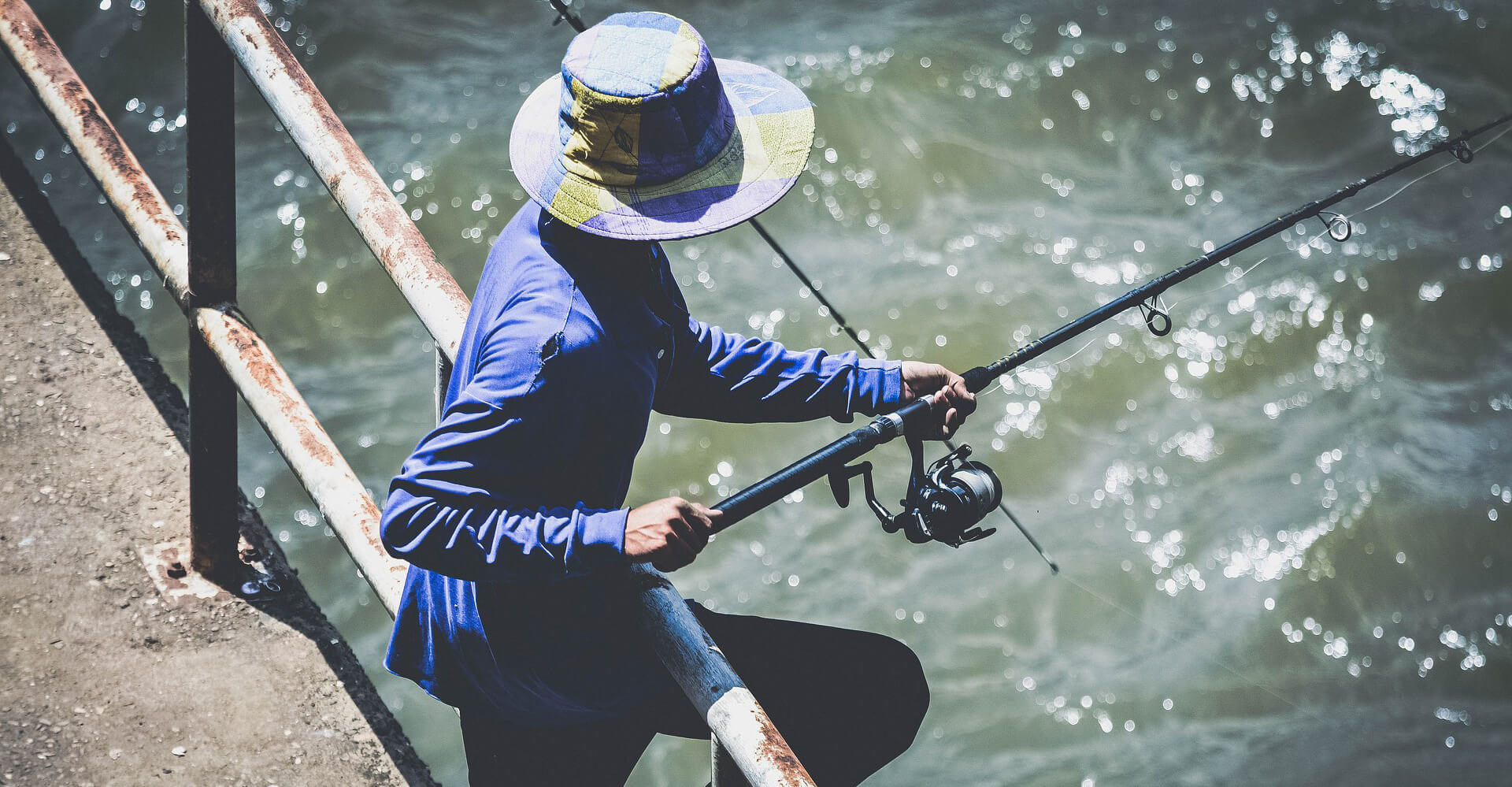
Features of catching zander in winter
The period before freeze-up and the first ice is the most fertile time for catching pike perch: although it recedes to considerable depths, it does not lose activity. A certain break in its active bite is observed in the wilderness – the fanged becomes lethargic and cautious, takes the bait reluctantly and only if there is a delicate rig. And by the spring, the predator is again activated and is caught on all tackle typical for this period. The main thing during this period is to determine the places of its dislocation, which is very difficult without knowledge of the bottom relief.
The main active tackle for this period is a nod rod with a fairly powerful blank . Artificial baits are usually used as bait: small vertical spoons, balance weights, rattlins, special winter “silicones”. In most cases, an expressive vertical lure play is practiced, covering a range of 10 to 50 cm from the bottom, with pauses of 10-15 seconds. However, an experienced angler can quickly catch all the horizons, choose the optimal animation and provoke the fanged to attack. Sometimes you can tap the bait on the bottom: a rising cloud of turbidity traditionally attracts a predator.
When using a jig, it is rational to paint it with fluorescent paint and supplement it with a bloodworm or a piece of meat or fish, if the design allows it. Fishing with a nod or float rod using live bait also shows itself well , but the problem is that it is difficult to get live fry in winter. Therefore, many fishermen in winter successfully catch zander with sprat, which can be purchased at any grocery store. This bait has a characteristic tasty smell, but an attractive game is provided by manipulations with the main artificial bait (spoon, jig, jig head), to which the dead fish is attached.
Alternatively, we recommend using live bait as bait . If there is a current, it is also possible to use a jig head or spinner in an alliance with the aforementioned tulka. The main difficulty in this case is the search for pike perch camps and the drilling of many holes, therefore the use of an echo sounder is strongly recommended.
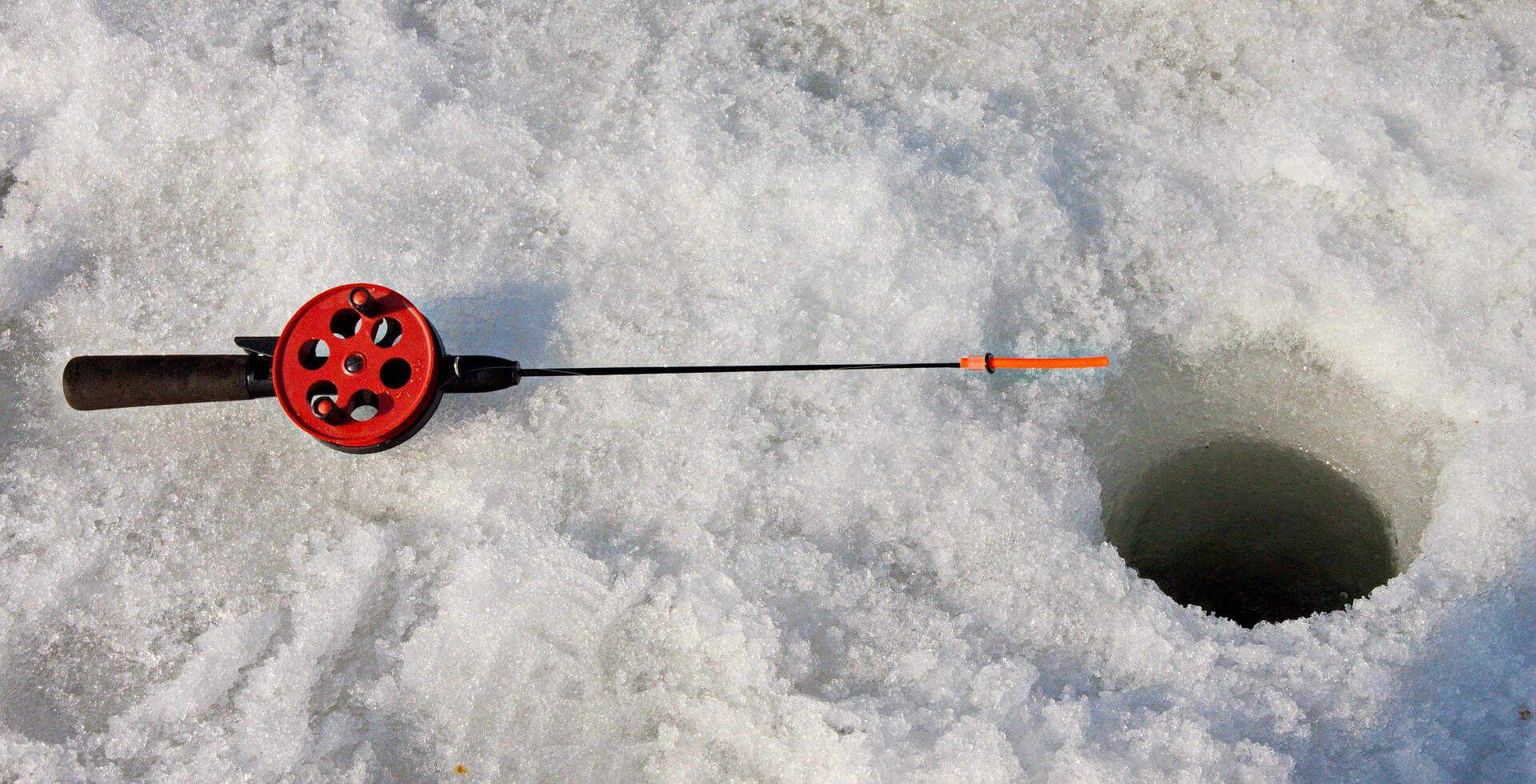
Fishing tips
The Zander is a difficult predator to catch, and you need to know a lot when hunting. Therefore, as an additional bonus for beginners, here are some tips from experienced anglers:
- Don’t waste time on useless casts . Better to use the reserve in the right direction: carefully explore the bottom of the reservoir in search of promising places. It is easier to catch a pike perch than to find, therefore, take the money to purchase an echo sounder. Can’t afford it? Explore the bottom with a load, the old-fashioned way.
- Do not use large baits . The pike perch immediately, on the spot, swallows prey in one sitting, therefore it prefers not too large fish with a narrow body. The bait should have this shape. When choosing live bait, be guided by a 7-10 cm fish. The larger one can be used as a passive decoy, cut into pieces.
- Do not use steel or Kevlar leads on the line . Do not use pike fishing equipment on zander. There is no need for this – the structure of the jaws will not allow the pike perch to have a bite and high-quality monofilament, and a noticeable leash can alert him. It is better to give preference to fluorocarbon, inconspicuous in the water – it will lull the vigilance of the predator with a sufficient safety margin. However, the tackle does not say for whom it is intended, so a pike tempted by a live bait can leave with part of the rig. There are no universal recipes, you decide.
- Sharpen the hooks carefully . The fanged palate is very hard, you simply cannot pierce it with a blunt sting, so it is recommended to choose the highest quality hooks with a chemical sharpening. Before fishing, check the sharpness of the tip on the nail and, if necessary, bring it to perfection.
- Respond instantly to bites . Pike perch grabs prey immediately, but with some resistance of the rig it can release it from the mouth. Some experienced fishermen play off a couple of meters of fishing line so that the predator more reliably captures the bait, and only then hook it. For beginners, it is not recommended to take risks: strike the fanged one immediately after the bite, with a sharp movement, based on the hard lips of the predator.
We can talk endlessly about pike perch: fishermen are inventing new tricks to catch this predator. But the above information is enough for a novice fisherman to be able to navigate in the methods and tactics of hunting a fanged robber!

